You know things are getting interesting when a pair of open-ear earphones are probably the best headphones you've tried this year, and this is where we find ourselves with this review. Shokz, known chiefly for its bone-conduction headphones, made its first foray into open-ear headphones in 2023 with the original OpenFit. These were and remain a premium choice of open-air technology. Now, we've got our hands on Shokz's 2024 addition to the range – the Shokz OpenFit Air, a lighter and cheaper iteration of the originals.
Open-ear tech like the Shokz OpenFit Air lets users enjoy music while staying aware of their surroundings. Unlike bone-conduction headphones, which send vibrations to the inner ear via the cheekbone, the OpenFit Air uses drivers which sit away from the ear and send audio down the ear canal. By keeping the ear open, the headphones allow users to hear ambient noise, ideal for outdoor exercisers like runners and cyclists who need situational awareness for safety.
The sports-ready intent of Shokz's latest headphones makes them perfect for Digital Editor William Austin-Lobley, who is training for a half marathon and has experience with open-ear tech, starting with his review of the OpenMove in 2021. Read on for his review after training with the Shokz OpenFit Air.
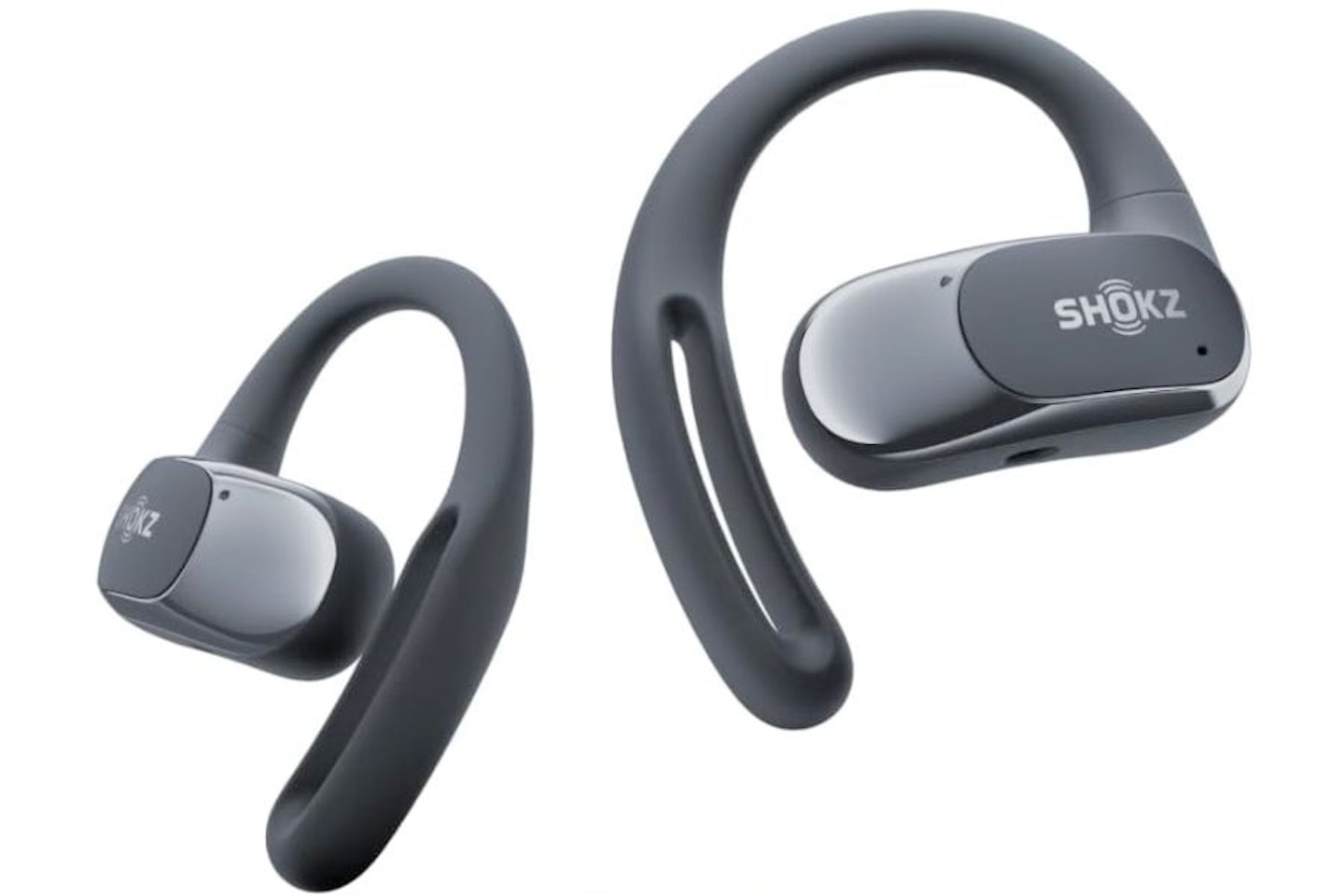
Pros
- Great sound that fights against the cliche of weak open-ear audio
- Comfortable and light, with a great grip that holds on during intense exercise
- Well-implemented touch controls
Cons
- Build quality is a bar below typical Shokz fare
- Six hours of battery in earphones
| Drivers | 18 x 11 mm composite dynamic driver unit |
| Battery life | Up to 28hrs with charging case |
| Charging time | Quick charge 10-minutes for 2hrs playback.<br>Charge the earbuds with the charging case: 60 minutes;<br>Empty case with charging cable: 120 minutes |
| Waterproofing | IP54 |
| Weight | 8.7g each<br>Charging case 56.5g<br>Total: 74g |
| Bluetooth | 5.2 |
The sound: Music, podcasts and my surroundings
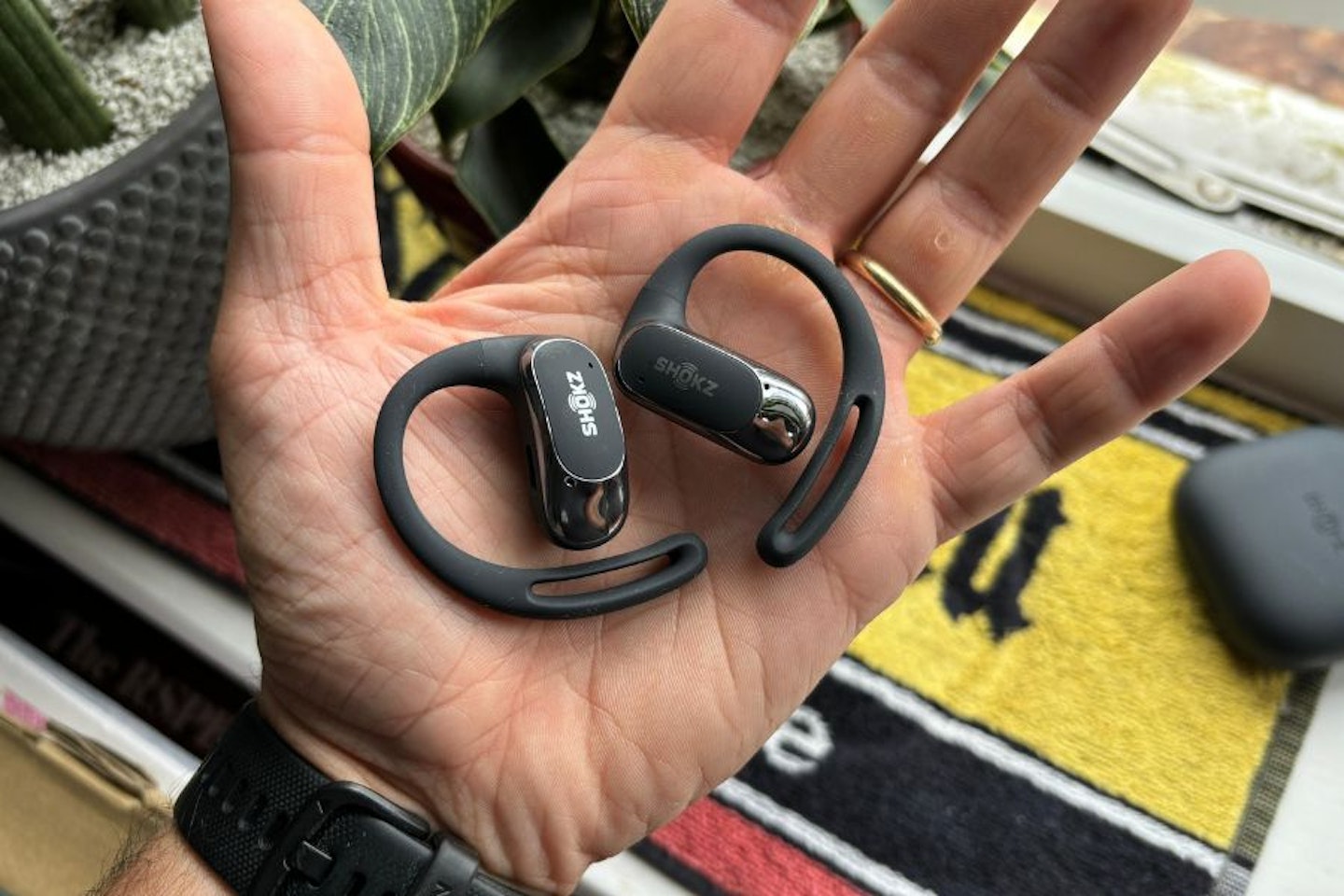
Open–ear technology offers a trade-off: you gain situational awareness but sacrifice audio quality. Compared with in-ear or over-ear options, such as the Samsung Galaxy Buds2 Pro or Sony XM5, there's a notable drop in audio clarity and bass power.
That said, manufacturers of open-ear tech are engaged in an arms race to negate these shortcomings, and improvements are frequent. Such is the case with Shokz, which has made a cracking forward push in sound quality with the OpenFit Air. Its driver has a large surface area, producing an impressively rich sound that can be tuned to your liking via the companion app, which has four EQ modes.
The 'Standard' EQ mode is a good all-rounder, and I recommend it for anyone who freely switches between music, podcasts and calls. I found 'Bass boost' to be the setting for music listeners, whether they like bass-heavy music or not, as this setting improves the audio's richness and presence. 'Vocals' is for podcasts, audiobooks, and calls, with a boosted middle range that pushes voices forward. 'Treble boost' is the only duff one of the bunch, and I found it an ugly setting in most instances – it only makes sense in very loud environments when you are desperate for your audio to cut through.
Note that using the OpenFit Air on laptops or smartwatches will lock you into the standard mode.
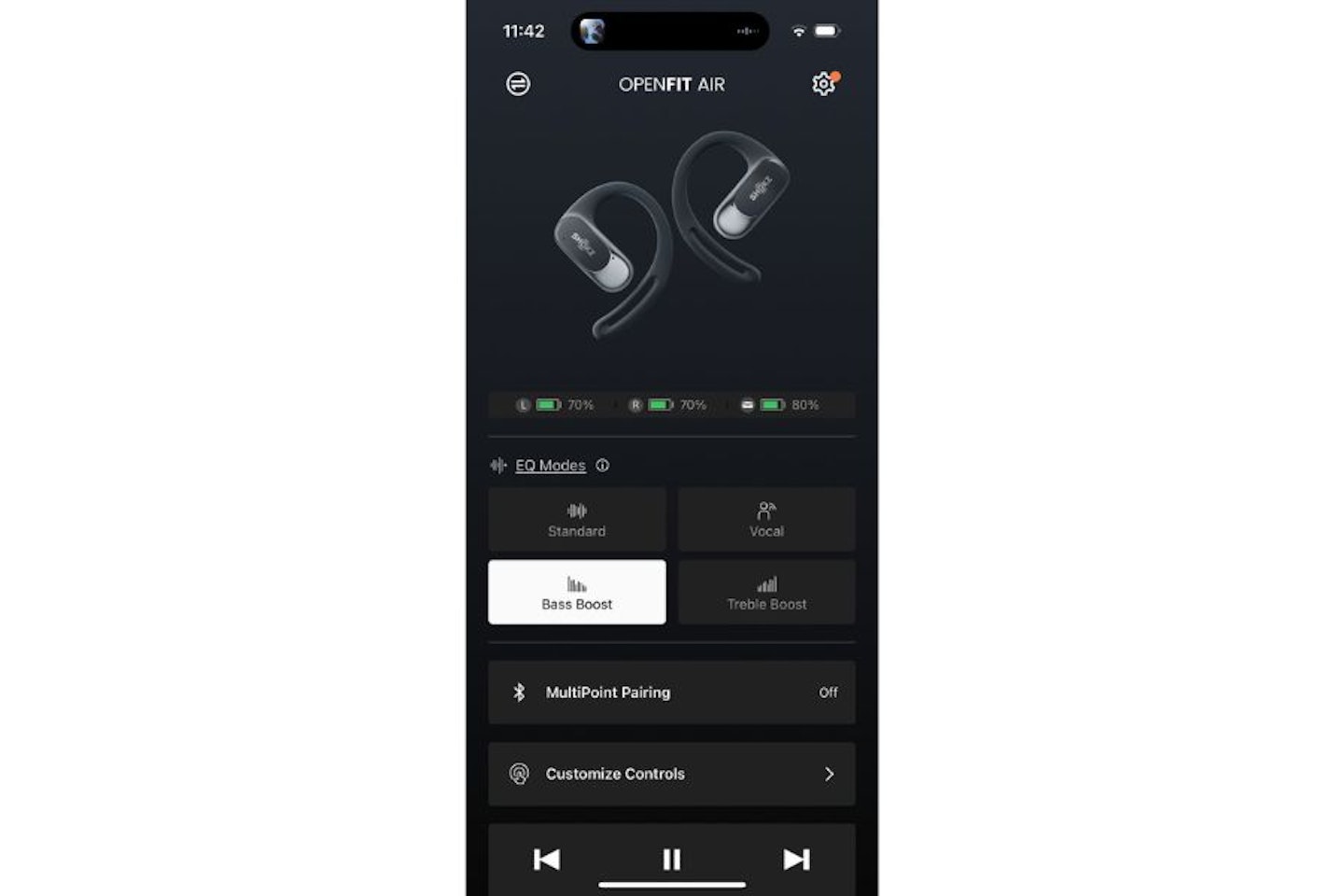
The impressive quality of the OpenFit Air audio is combined with the pleasantness of the open-ear experience, which gives your audio – music or otherwise – a very natural timbre and pleasant realness. Its organic quality is an improvement on that of bone conduction and is an experience I've had before when testing the OneOdio OpenRock Pro, another open-ear headphone that I respected and admired but ultimately failed to convert me to its cause. With the OpenFit Air, I have managed to go over entirely, and it's all down to the quality of the audio.
I can hear my surroundings, but can they hear me?
The main cause of the open-ear movement isn't organic timbres, though. It's safety and awareness, and OpenFit Air fulfils this brief. Though Shokz has angled the headphones' drivers to maximise the sound performance, there's plenty of space left for essential audio feedback and cues from the outside world to come through. Traffic, conversation and birdsong can all be heard – not really a win for Shokz on its own, but testing these and really paying attention to sounds around me has reinvigorated my excitement around open-ear listening.
Equal to being able to hear, a key feature of open-ear tech is ensuring that I can listen to my surroundings without those in my surroundings hearing my music, calls or podcasts. Shokz agrees, including something called DirectPitch™ technology, which performs nifty soundwave tricks with sound waves to direct more sound towards the ear and less elsewhere, reducing sound leakage.
I tested its proficiency by having my partner stand by my side in my silent home office and report on the sound leak at various volume levels. At around 30 per cent, my music sounded like a quiet radio to me and wasn't noticeable to them. As I neared 50 per cent, my music was pretty loud and starting to affect how I could concentrate on what she was saying, and she could hear the drums and a tinny rattle – at this point, she reports she would have found it annoying in an office.
I consider this a decent win for the Shokz OpenFit Air – in a standard office environment, gym or out on the streets, the leakage isn't going to be a problem and any but the highest audio levels.
The fit during exercise: Outdoors running and cycling with the OpenFit Air
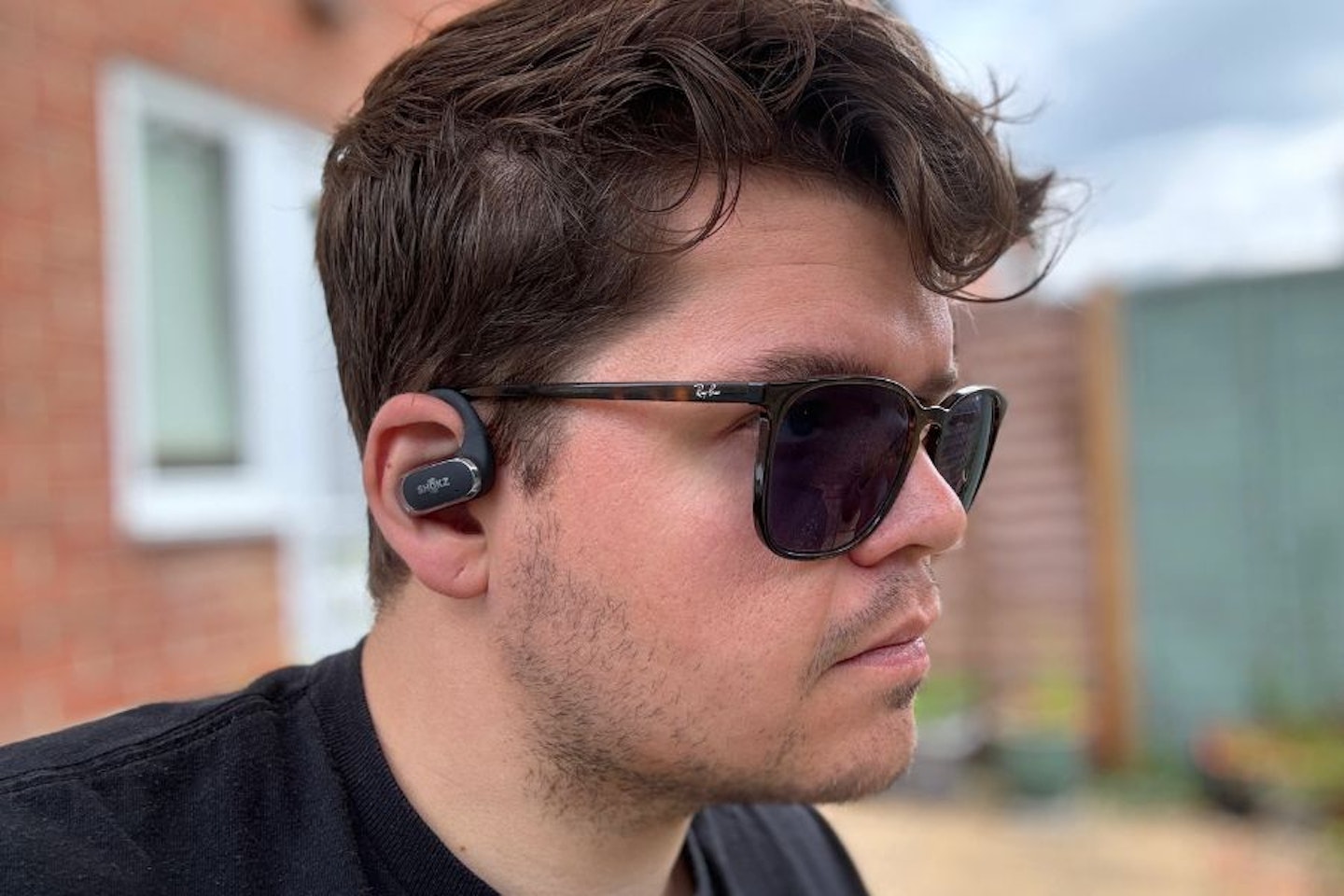
In training for my upcoming half marathon, I have three runs a week and used the OpenFit Air for two: my tempo run and easy run. My three other training days are in the gym, where I don't recommend open-ear options due to competition with the PA system.
The fit during training is excellent. The ear hooks are made from a thin alloy coated with silicon, ensuring they hold position well while being flexible and comfortable. The sub-9g weight keeps them free from pressure points. The narrow design of the hooks is great for glasses wearers like myself, allowing both the OpenFit Air and glasses to fit without pushing on each other.
I've worn them for running, cycling, and yoga practice. After a few minutes, I tend to forget I'm wearing them, and they never fall off – even when pulling a jumper on and off or shaking my head vigorously as part of testing. They simply do not move, which is essential for open-ear headphones, and the Shokz OpenFit Air excels in this area.
Compared with a rival set of open-ear headphones, the OneOdio OpenRock Pro, I find the OpenFit Air far more comfortable. The super-light design and thin silicone ear hooks keep them in place and hold them in such a natural way that you forget they are there. Additionally, they are very comfy alongside glasses, which is a real plus.
Keeping control
Though the OpenFit Air uses touch controls and its vibration-based brethren use physical buttons, the headphones carry the DNA of Shokz bone-conduction headphones in their super-simple, exercise-first control scheme.
There are two controls: a double tap and a press-and-hold. By default, these skip songs and control volume, but they can be modified via the app to trigger a smartphone's voice assistant or be disabled completely. The simple, responsive controls are ideal for workouts when you don't want to remember complicated Morse code-like patterns for quick actions.
Multi-point Bluetooth is also an option that can be turned on in the app. This feature allows you to switch quickly between two devices for audio playback. For me, that meant my iPhone and Garmin watch. For others, that might mean a phone and a laptop. It's a nice feature that adds to their versatility.
Got a grip: My secret weapon on recovery days
The OpenFit Air has quickly become a favourite recovery day headphones for me. They allow me to stream music from Spotify on my phone while I follow along with recovery day yoga routines on my TV via YouTube. The OpenFit Air's grip is without fault. It grips onto my ear lightly but holds position during all movements, downward-facing dog included.
My in-ear earphones slip loose or fall out during stretching, which is very off-putting and frustrating. However, my confidence in the OpenAir Fit allowed me to go through the motions without thinking about them.
Any issues?

I'm not blown away with the build quality. The rubberised finish is quality, but the metal-looking panels are a cheaper plastic that isn't to my taste – still acceptable and a minor gripe, only inspired by Shokz's usually very high standard.
Battery is always a bit low with this type of technology. While traditional earphones could give you upwards of 12 hours, the OpenFit are giving you half that with only six hours of music playback. They are long enough for most if they are used for workouts, but if you want them to be your primary daily headphones, you'll be limited in use.
Unlike the Shokz bone-conduction range, these headphones benefit from a clamshell case, which extends overall playtime to 28 hours, which is a solid effort. Some of the foibles of shorter battery life are awhich is nswered with this clamshell case, too, which can recharge the headphones with two hours of playback time in only 10 minutes.
Price and competition
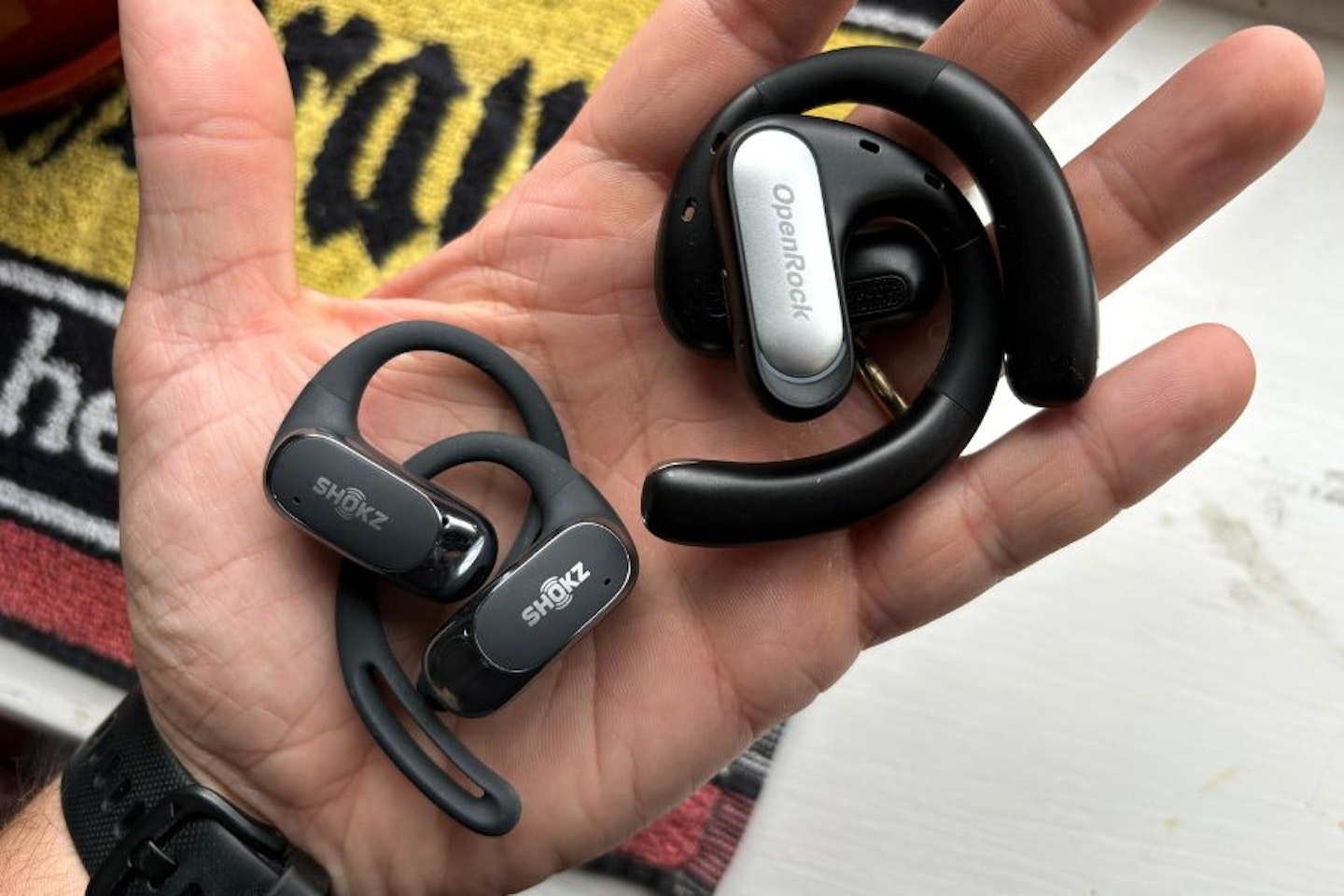
At an RRP of £119, the main competition comes from the OneOdio OpenRock Pro. Though I have reviewed these previously and rewarded them with a four-star rating, I would now suggest the Shokz OpenFit Air, the better of the two. The reasoning is the fit and sound quality.
At full retail, the Shokz OpenFit Air headphones mark a significant investment for most. While very cheap options are available on the marketplace, some of which land under £40, most of which are of limited quality and performance. While I can see the value in such items for testing the open-ear waters, for anyone serious about quality technology, lasting products, and a trustworthy experience, the Shokz OpenFit Air are worth saving up to purchase.
Verdict
The Shokz OpenFit Air headphones impressed me with their exceptional fit, sound quality, and ease of use, making them ideal for outdoor exercise like running and cycling. The open-ear design allows for situational awareness, which is crucial for safety, and Shokz has mitigated much of the compromised audio usually expected with such devices.
The sound quality is powered by the large driver surface area and four EQ modes that can be adjusted via the companion app. This versatility makes them suitable for various audio preferences, whether it's music, podcasts, or calls.
While the overall build quality was a notch down from the usually flawless shells of Shokz bone-conduction headphones, and the six-hour battery life may be limiting for some users, the Shokz OpenFit Air is fairly priced at £119. It offers superior comfort and performance compared to competitors that I’ve tried previously. The Shokz OpenFit Air is a worthwhile investment for those serious about high-quality open-ear headphones.
Other products to consider:
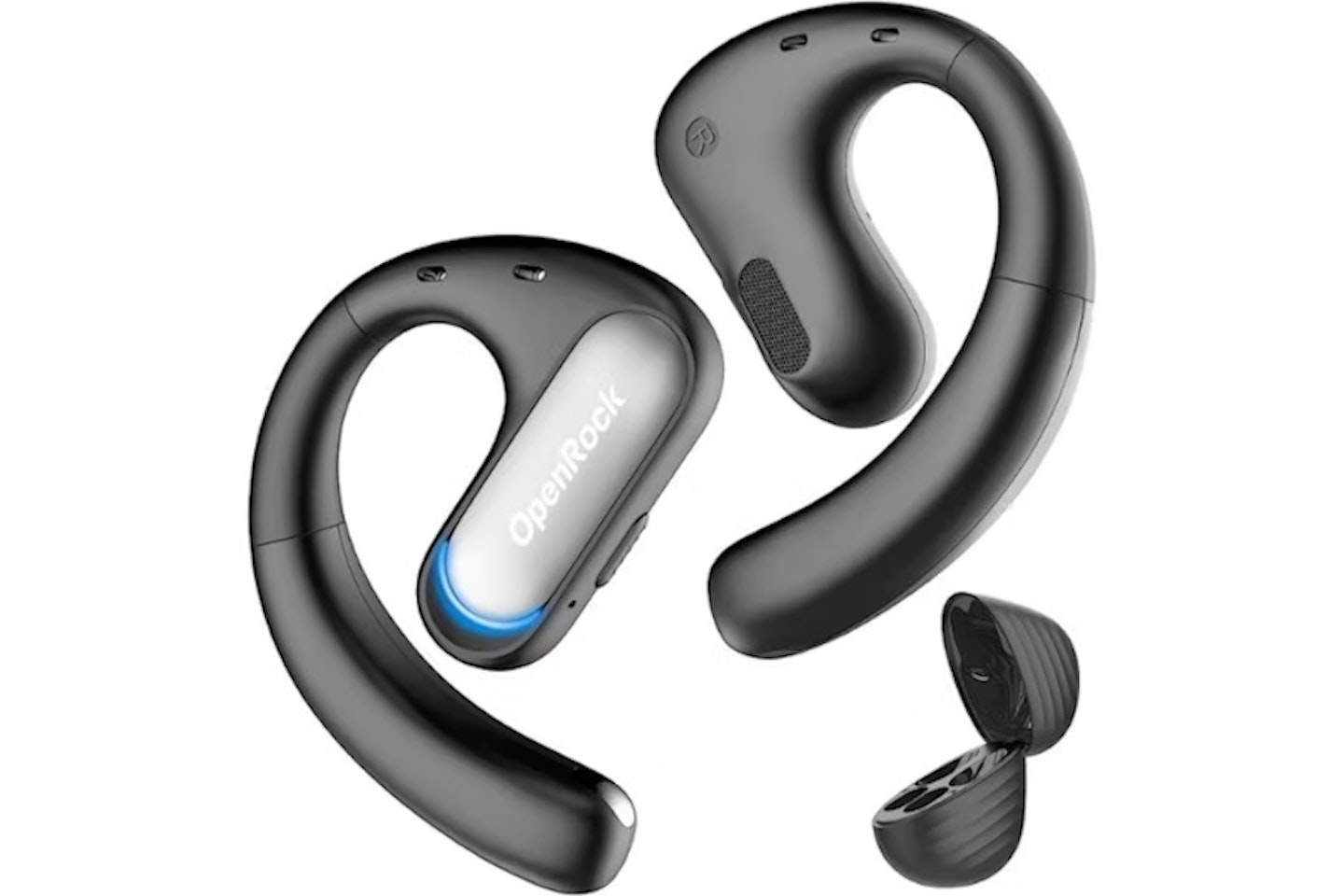
Though the comfort and sound aren't as impressive as the Shokz, the OneOdio is still a good example of open-ear tech and has a greater battery life.
Pros
- Decent audio perfromance considering tech
- Good battery
Cons
- Audio suffers at volume
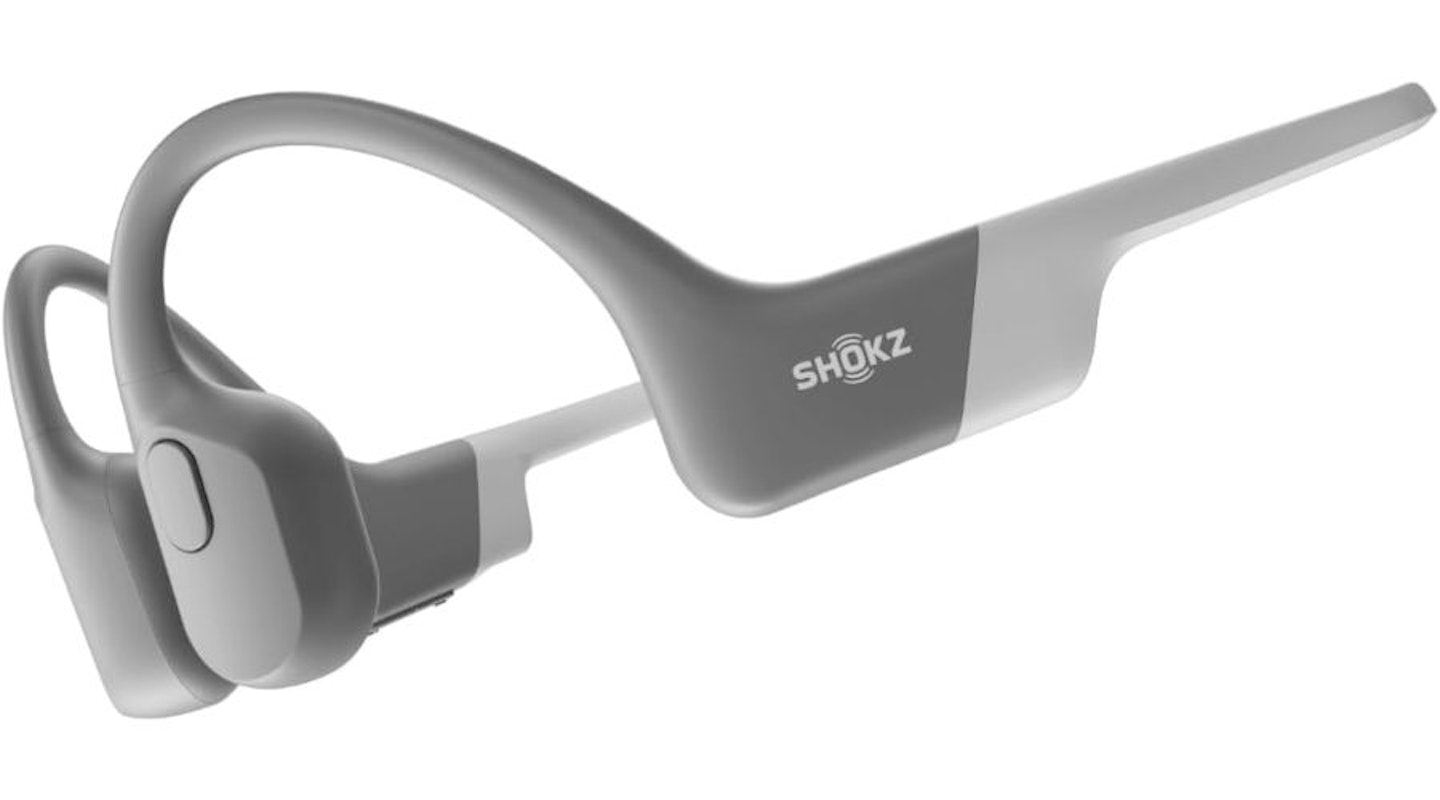
Shokz has a wide range of bone-conduction headphones that offer a smiliar expereince using alterative tech, and these are aimed towards runners.
Pros
- Improved sound – eighth-generation tech improves sound over OpenMove
- Defence against downpours – IP67 can give you confidence in the heaviest rains
- Get the right fit – standard and mini models available
Cons
- The battery and weight improvements are marginal over cheaper Shokz models
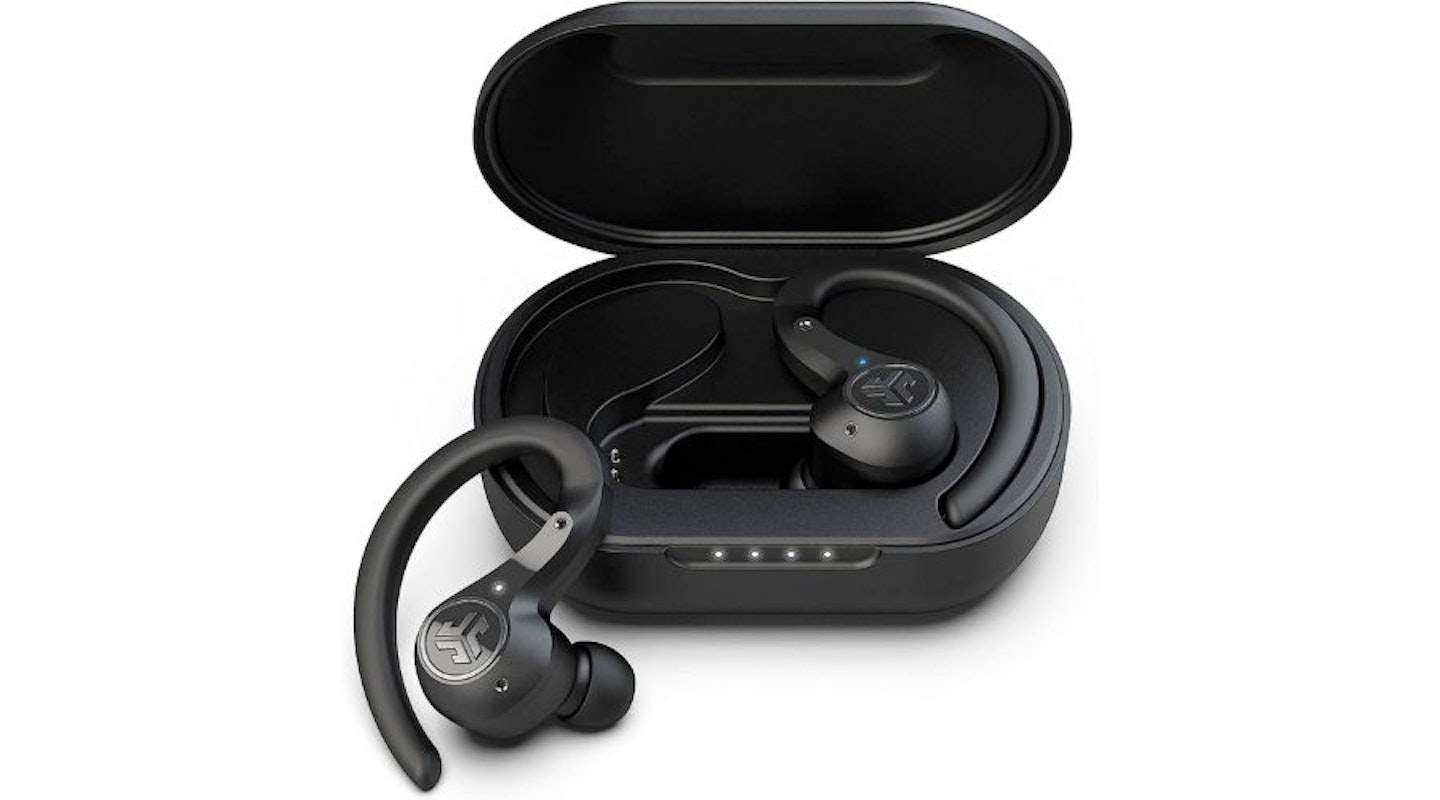
Slightly over-enthusiastic bass is a fair trade-off for earphones that are otherwise perfect for gym-goers. The fit and volume will keep the outside world at bay while you work through your sets, while the battery means you can forget about plug sockets for a quarter of the year.
Pros
- Exciting audio, despite bass bias
- Great fit throughout workouts
- Phenomenal battery
Cons
- Plastic-y finish
Who tested it?
William Austin-Lobley was the tester for this review. William, now our Digital Editor, has been with What’s The Best since the beginning, cutting his teeth as a writer and reviewing audio devices from day one. He has leveraged his experience in bands and recording studios and his love for music to thoroughly review audio, including Bluetooth speakers, budget earphones and premium headphones. Over the past two years, he has a reinvigorated love of hiking, weightlifting and running, and is training for his first half-marathon.
How was the product tested?
William used the product for several training sessions, including running, cycling, and yoga. They were also used for office work and calls, listening to podcasts while doing household chores and walking to and from the shops down busy city centre streets. The Shokz app was downloaded on his iPhone 15, and all settings were tried and tested.
William Lobley is the Digital Editor for What's The Best. Here, he oversees, curates and researches listicles and reviews as many products as his home office can handle.
He has spent five years writing about tech, audio, outdoors and fitness, and has reviewed everything from smartphones to ice baths. In addition, he's well-versed in sniffing out the best deals and savings the internet offers.
When not at his desk writing, reviewing or deal-hunting, he'll be relaxing with Japanese crime novels, bingeing some classic anime, strolling the countryside or at the gym listening to the heaviest metal Spotify has to offer.
Subscribe to the What’s The Best Newsletter to keep up to date with more of the latest reviews and recommendations from the rest of the What’s The Best team.
